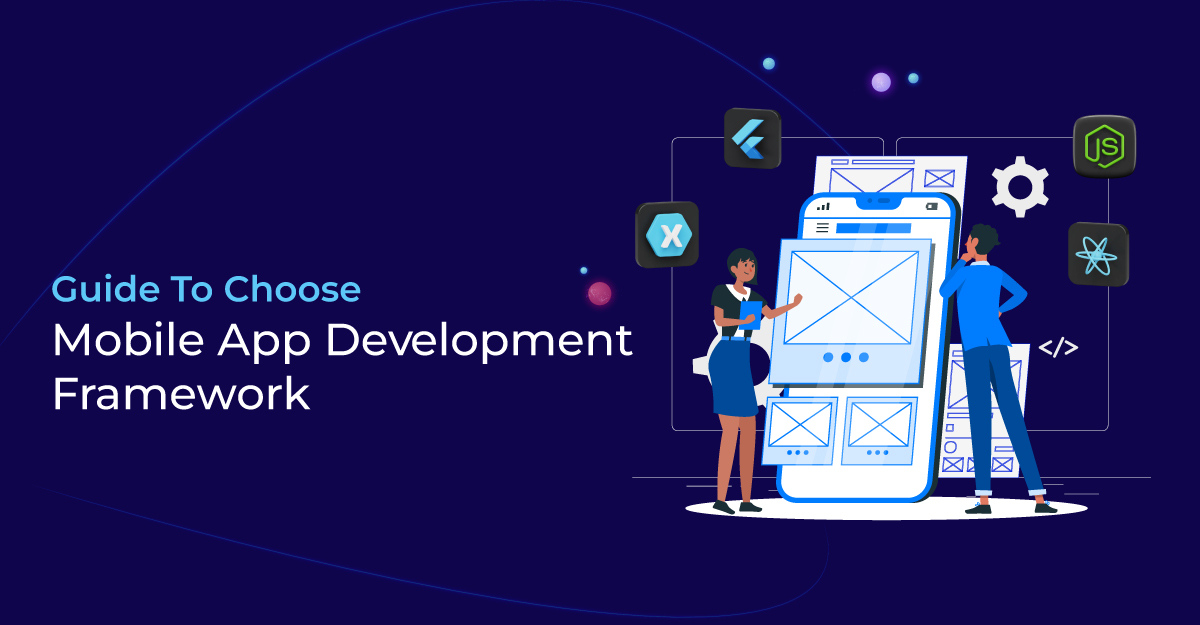With a wide range of custom mobile app development services, like online music fun sites, Instagram or Facebook, mobile applications are becoming more intelligent. However, the problem of apps that will only operate on iOS devices raises questions about the rivalry between both Android and iOS platforms. Since there are 1.85 million iOS apps and 2.56 million Android apps available in the Apple App Store, cross-platform app creation is essential to solving this problem.
A mobile application development company must utilize a variety of tactics to reach more leads and generate more consumers if they want to achieve maximum financial success in the modern digital age. In order to test and execute software on platforms they do not own, emulators are frequently employed. The effectiveness of apps is a key consideration in their placement on respective app stores.
Mobile Application Development Framework
Mobile app development frameworks are toolkits that give code libraries, SDKs, and API tools to assist developers in constructing effective and reliable apps without starting from scratch. They serve as a framework for mobile applications. They are of two kinds: cross-platform and native. Cross-platform frameworks are used for programs that run on numerous platforms and operating systems, whereas native frameworks are utilized for specific platforms like Android or iOS.
It is feasible to create mobile applications for Android and iOS without requiring any frameworks or platforms by using Java for Android and Swift for iOS. At various phases, such as design, development, and testing, different frameworks offer various MSDLC techniques. Depending on the needs of the app, different frameworks have different capabilities that make the development process easier or tougher. While some frameworks concentrate on security and an easy user experience, others assist developers in producing quick, effective wearable technology programs. Successful mobile app development depends on matching SDLC phases with certain frameworks.
Different Mobile App Development Frameworks
React Native
React Native is a well-liked JavaScript framework for creating mobile apps that are renowned for its quick responses, compatibility with both iOS and Android, and top performance. It features a straightforward user interface, accepts third-party plugins, and delivers practical programs and libraries. However, it has limitations such as a protracted setup period, a learning curve, a lack of security, and ineffective memory management.
Flutter
With the help of a Flutter app development company, you can enjoy all of Flutter's features, such as a Google-based, open-source UI toolkit that generates natively compiled applications for desktop, mobile, and web platforms from a single codebase. Custom widgets, rapid reload capabilities, performance similar to native apps, less testing, and fewer development costs are all provided. It does, however, necessitate learning Dart programming, has a small selection of libraries, poor iOS compatibility, and does not support Android or Apple TV.
Swiftic
With a user-friendly interface for app creation, marketing, maintenance, analytics, and promotion, Swiftic is a no-code mobile app development solution created for iOS. It includes a click-to-call function for immediate customer connectivity, configurable app creation, and CMS integration. However, it has drawbacks like poor team management, location-based features, constrained design possibilities, lack of support for Windows, an expensive app builder, no API options, remote customer assistance, and a limited number of style changes.
Ionic
Ionic is an open-source framework for developing hybrid mobile applications that combines web technologies to produce powerful, personalized apps. Access to host operating features like the camera, GPS, and flashlight is made possible by this wrapping Angular Framework. It features a single code development language for all mobile operating systems, simple adaptation, cross-platform interoperability, an appealing user interface, simple app testing, and community involvement. However, it performs worse than native programs and is bulkier than native apps. It also reloads slowly, requires plugins, and has poor security.
Xamarin
App developers utilize the free, open-source Xamarin platform to build native apps for smartphones and desktop computers. It works with Windows, macOS, tvOS, watchOS, Android, and iOS. Diagnostic tools, streamlined maintenance, a component shop, support for smart apps, and interoperability with gadgets like the Apple Watch and Android wear are all provided by Xamarin. It does have drawbacks, though, including a big application size, limited library support, unsuitability for apps with heavy graphics, little community support, inadequate support for complicated user interfaces, expensive development costs, a lack of security for third-party plugins, and labor-intensive mobile-friendly features.
Mobile Angular UI
An HTML 5 framework called Mobile Angular UI combines AngularJS and Bootstrap to produce high-quality mobile apps with customizable features. It provides a standard Angular experience, several UI components, and improved runtime performance. With a simple CSS file, it also enables responsive interfaces. However, the documentation is inadequate, and the program needs server-side authentication.
Factors To Consider:
Time Efficiency
Implementing necessary functionalities and developing a product within a given timeline necessitate the use of a framework. Cost-effectiveness might increase as development time decreases. So pick a framework that will not take up a lot of your time.
Cross-Platform Development
Numerous mobile apps are cross-platform, which means they do not require specialized coding for any one platform in order to work on others. This approach encourages seamless data connection between systems by enabling a mobile app development company and users to use mobile apps on their own devices and saving developers time. This approach has made it easier to access mobile apps on a range of devices.
Developer Friendly
Consider complexity when choosing a framework for app development as it might affect time management, delay product release, and raise the finished budget. To ensure a smooth transition to the finished product, use a framework that is user- and developer-friendly.
Scalability
A flexible user base requires a scalable mobile app development framework, which guarantees user experience and support for a wide variety of requests per minute (RPMs) as app demand rises.
Speed Consideration
For an app to work well, speed must come first because it directly affects the user experience. While slower loading times might not be stunning, a quick app keeps users interested. To ensure a more seamless experience, choose a framework that is quicker and fulfills the needs of your app.
Cost of development
The cost of development is an important factor, and the framework you choose should be affordable. If you have a tight budget, choose an affordable development framework and make sure your project only has the most crucial functions.
Risk And Security
To shield your app from potential breaches and incursions, give security strong priority while selecting a development framework. Mobile data and Wi-Fi are both quite vulnerable to security concerns. A payment gateway that passes penetration and vulnerability tests is an example of a platform that offers security and sufficient speed.
Overall Quality
Quality results are essential for the success of an app because they can draw in a sizable client base, improve user experience, and draw in new users. Instead, choose a smooth, high-quality experience at every touchpoint because low quality might have a detrimental influence on app performance.
Conclusion
The right framework and software development tools must be used while developing mobile apps, which is a significant procedure. To leverage these technologies, hiring a mobile app development company in India can reach more leads and customers, ensuring optimum financial success and competition in the digital age.



